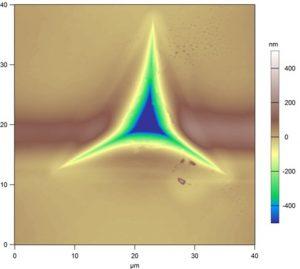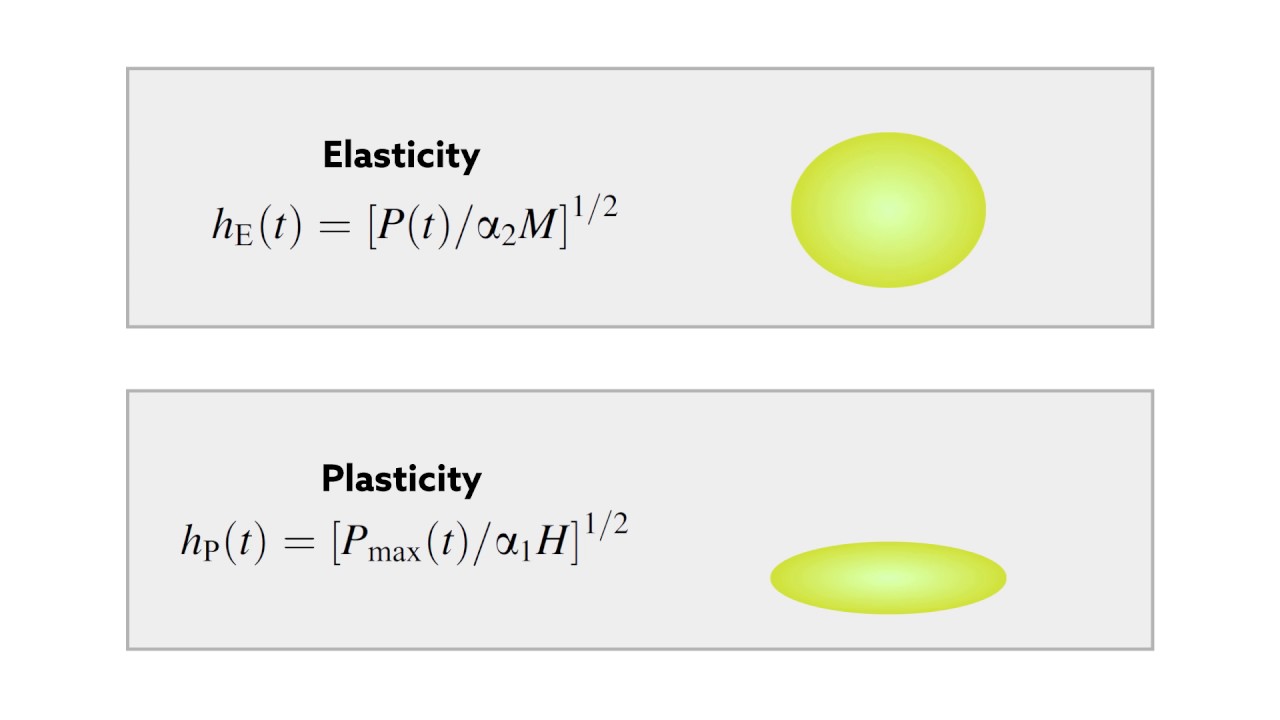Taking Measure
Just a Standard Blog

Three-dimensional reconstruction of a forest of carbon nanotubes embedded in epoxy.
I’m a bit of a romantic when it comes to science. When anyone asks what inspires me to be a scientist, I tell them that it’s amazing to add to the collective knowledge of humanity. NIST is the kind of place where that happens every day.
Until I went to college, I had lived my whole life within a five-minute drive of NIST. My parents started working there as scientists before I was born, and they still do, although now in new roles outside the lab. I guess they passed down their love of science, and probably some of their ability as well, because I’ve wanted to be a scientist for as long as I can remember. I started interning at NIST after my freshman year of high school, and I continued coming back for the next six summers after that. There’s something special about the environment at NIST. You might expect that professional scientists would hate having to teach newbies like me new skills throughout the whole summer. They have their own work to do, after all. Despite this, I have only experienced kindness and patience in working with people at NIST. Mentorship is really important for new scientists, and I’ll be forever appreciative to everyone who has taken the time to help me over the past seven years.
Interning at NIST is great, but being a Summer Undergraduate Research Fellow, or “SURF” student, is even better. The opportunities provided for us, ranging from interesting talks and connections with fellow students and scientists to access to world-class equipment and the chance to do our own research, are incredible. My first SURF program project was with carbon nanotubes.
Carbon nanotubes have amazing properties. They are the strongest and stiffest material known, conduct heat and electricity amazingly well, and can be made into the blackest artificial substance in existence (a personal favorite). From this, it sounds to me like we should be using carbon nanotubes everywhere we can! There are many exciting plans to expand their use, including in polymer composites.
Polymer composites are plastics that have been mixed with some sort of fiber, like fiberglass or carbon fiber, to make them stronger. They’re used when high strength and low weight are desirable, such as in cars, planes, and sports equipment. Manufacturers can make polymer composites with carbon nanotubes, but getting the nanotubes to disperse evenly throughout the material is challenging because they tend to clump together. This issue has led to many questions about how strong and resilient these materials are. For my SURF project, my mentor Dr. Robert Cook and I investigated the mechanical properties of these composites. In the process, we developed a novel method for learning how properties vary across the surface of this class of materials.
A common way to evaluate the mechanical properties of a material is to look at how it responds when a force is applied. We describe a material’s response to force using three terms: plastic, elastic, and viscoelastic. Plastic deformation, like putting a dent in your car’s fender, is permanent and doesn’t go away on its own. Elastic deformation, e.g., how a plastic water bottle will snap back to its original shape after being pushed in, is temporary and will recover once the force is removed. The last kind of deformation is viscoelastic, where the elasticity depends on the length of time the pressure is applied. For example, when you stretch Silly Putty*, it’s not only the amount of force you put into it that matters, it’s also the time you spend pulling it apart. If you pull on it for 30 seconds with a constant force, it will be significantly more stretched than if you pull on it for one second. Some of this deformation may recover, but the total deformation is dependent on time.
It is difficult to analyze viscoelastic deformation, as the models are significantly more complicated than for plastic and elastic deformation. The upshot of this is that scientists rarely model viscoelastic deformation, and if they do physical tests, they do them very quickly, which doesn’t give the whole picture of change over time—just think of all the stresses a car or plane undergo over the course of a cross-country trip as opposed to a quick trip to the grocery store. Past research measuring the qualities of carbon nanotube composites didn’t include time-dependent properties. Because we want to use carbon nanotube composites everywhere we can, getting data on how their strength changes over time was one of the main aims of our project.

The samples we looked at, like the composites used by most manufacturers, contained unevenly distributed clumps of carbon nanotubes. Using a small, sharp probe called a nanoindenter to poke the surface of the material in a regular grid pattern, we made a map of its time-independent, fender-denting and plastic-bottle crunching deformation properties. To get at that ever-elusive time-dependent, viscoelastic Silly Putty-type deformation, we scaled back the force after the initial poking and then held it for while—in our case, about 10 to 20 minutes.
We found that the areas with carbon nanotube clumps had less deformation over time than the areas with no clumps, showing that the carbon nanotubes led to an increase in the material’s strength and resilience. Even with the clumping issue, the nanotube-infused polymer composite as a whole was much more resistant to viscoelastic, putty-stretching and plastic, fender-denting deformation.
While we were looking specifically at the properties of carbon nanotube-polymer composites, the protocol we developed can also be used to analyze the various types of polymer deformation in general, which is perhaps more important than the findings about carbon nanotubes themselves.
Creating a deformation protocol is especially gratifying, not only because it adds to the body of knowledge for polymer composites, but also has a wider impact on studies that may be done in the future.
For our work on this topic and the subsequent paper that was published, Dr. Cook and I received the Journal of Materials Research 2016 Paper of the Year Award, a prestigious award that I am extremely honored to receive … and it doesn’t look bad on a resume, either.
The work that I did at NIST, including the work on this topic, has inspired me to continue doing research. I truly believe it is the best way for me to make a difference in the world.
*Any mention of commercial products is for information only; it does not imply recommendation or endorsement by NIST.
**Edited May 5, 2017, to correct a word.
About the author
Related Posts
Comments
- Reply






